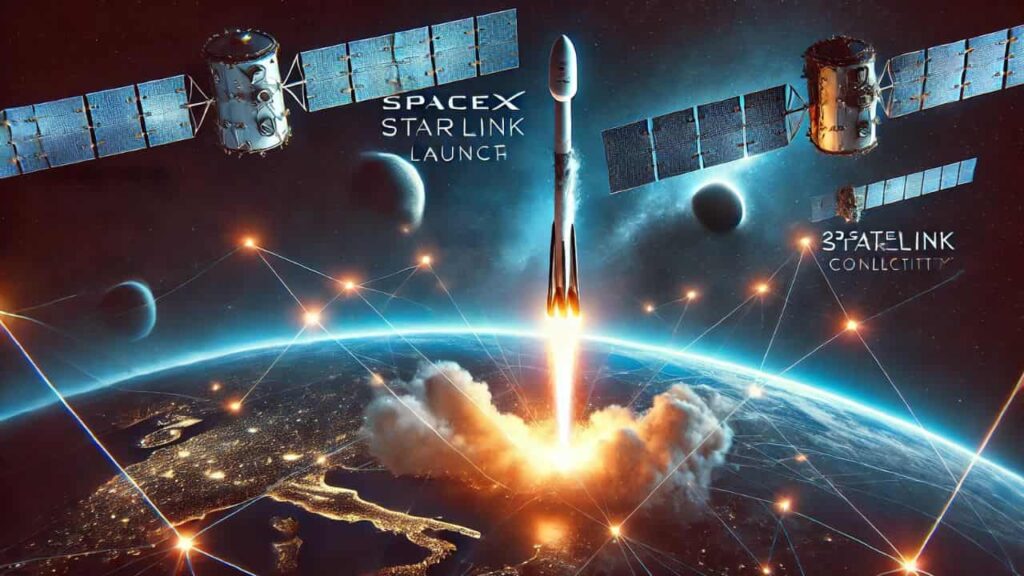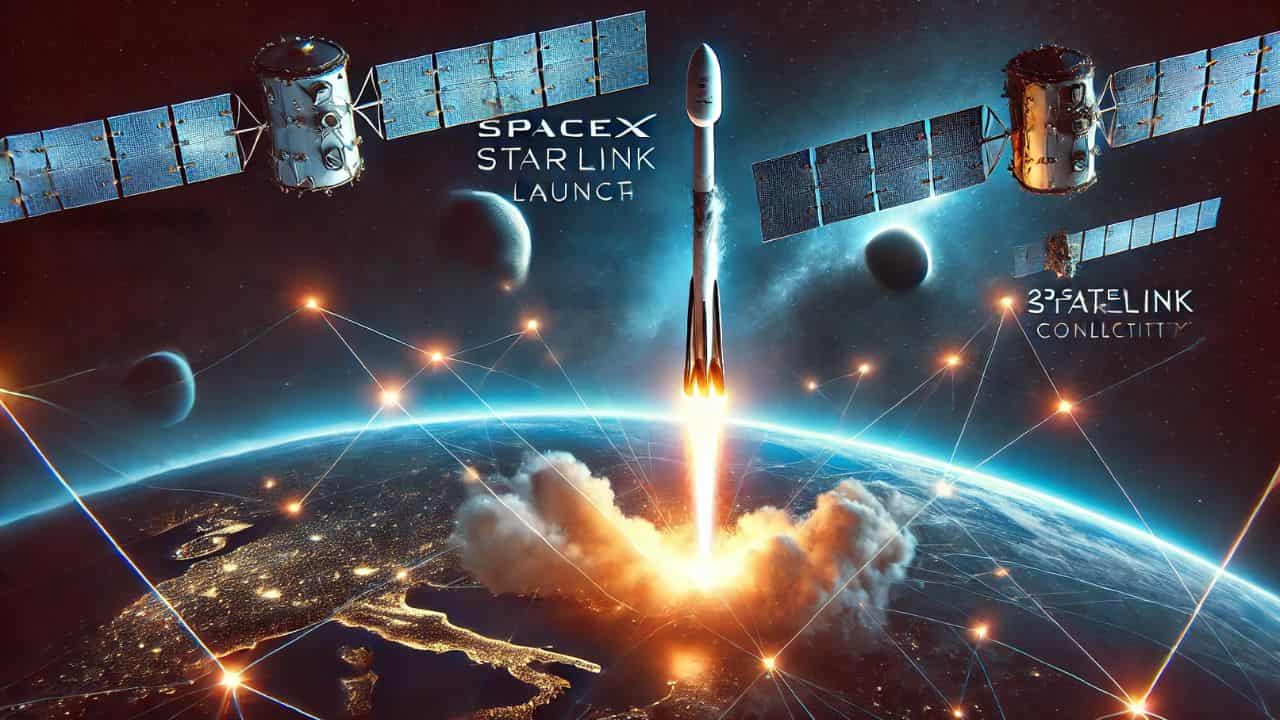Explore SpaceX’s latest mission to launch 23 Starlink satellites, advancing global internet coverage and showcasing reusable rocket technology. Learn more about the significance of this launch.
SpaceX is targeting to launch 23 Starlink satellites into low Earth orbit from Kennedy Space Center on Monday morning. This mission highlights the company’s commitment to global connectivity through its expanding Starlink network and the innovative use of reusable rocket technology. Discover the details of the launch, the importance of the Starlink project, and what this means for the future of global internet access and space exploration.

SpaceX’s Ambitious Plan: Launching 23 Starlink Satellites on Monday Morning
SpaceX is once again set to make headlines with its upcoming mission to launch 23 Starlink satellites into low Earth orbit (LEO) on Monday morning. The liftoff, planned from Kennedy Space Center, marks yet another milestone in SpaceX’s ambitious project to provide global high-speed internet through its Starlink satellite constellation. This mission, designated to launch at 6:37 a.m., comes with additional backup opportunities until 9:49 a.m. if needed, ensuring the company’s continuous commitment to expanding its satellite network.
The Mission: A Closer Look
This particular launch is not just another routine mission for SpaceX. It represents the 17th flight for the first-stage booster that will be supporting this launch. Reusability has been a key factor in SpaceX’s strategy to reduce the cost of space exploration, and this mission is no exception. The first-stage booster involved has already seen significant action, having been used in the launch of several other missions including SES-22, ispace’s HAKUTO-R Mission 1, Amazonas-6, CRS-27, Bandwagon-1, and 11 previous Starlink missions.
After the booster completes its part in the mission, it will once again attempt to land on SpaceX’s drone ship, A Shortfall of Gravitas, which will be stationed in the Atlantic Ocean. The successful recovery of the booster would further solidify SpaceX’s dominance in the realm of reusable rocket technology, which has proven to be a game-changer in space exploration.
Starlink: The Mission and Vision
Starlink, a project initiated by SpaceX, aims to create a vast network of small satellites in low Earth orbit, which will beam down internet coverage to every corner of the globe. This initiative is particularly focused on providing high-speed internet to rural and remote areas where traditional internet infrastructure is either non-existent or inadequate.
The 23 satellites being launched on Monday will join the growing constellation of over 4,000 satellites that have already been deployed as part of the Starlink network. Once operational, these satellites will contribute to improving the service quality and expanding coverage, bringing SpaceX closer to its goal of offering global broadband internet coverage.
The Importance of Reusability
One of the standout features of this mission is the use of a first-stage booster that has already completed 16 previous missions. SpaceX’s focus on reusability is a critical element of its business model. The Falcon 9 rocket, designed with reusability in mind, has become the workhorse of the company’s launch fleet. By reusing rocket components, SpaceX is able to significantly reduce the cost of launches, making space more accessible and allowing for more frequent missions.
The fact that this particular booster is on its 17th flight is a testament to the durability and reliability of SpaceX’s technology. Each successful recovery and reuse of a booster not only saves costs but also contributes to the sustainability of space exploration by reducing the need for new materials and manufacturing.
Challenges and Setbacks
SpaceX’s journey, while marked with many successes, is not without its challenges. The planned launch on Sunday morning was abruptly aborted. SpaceX has not provided specific details about the reason for the scrub, only stating that both the vehicle and the payload are “in good health.” This incident serves as a reminder of the complexities involved in space missions, where even the smallest technical issue can delay or alter a launch.
Scrubs and delays are not uncommon in the space industry. They are often necessary to ensure the safety of the mission and the success of the launch. In SpaceX’s case, the company’s track record of innovation and problem-solving has equipped it to handle such challenges with resilience.
The Broader Impact of Starlink
Beyond the technological marvels and the excitement of rocket launches, Starlink represents a significant shift in how the world might connect in the future. With internet access becoming increasingly essential for everything from education to commerce, the potential for Starlink to bridge the digital divide is immense.
Currently, millions of people around the world lack reliable access to the internet. Traditional infrastructure, particularly in remote and rural areas, often fails to meet the needs of these populations. Starlink’s satellite-based approach bypasses the need for extensive ground infrastructure, making it a versatile and scalable solution.
However, the deployment of thousands of satellites in low Earth orbit has not been without controversy. Astronomers have expressed concerns about the potential for light pollution and the impact on astronomical observations. The increasing number of satellites also raises concerns about space debris and the long-term sustainability of low Earth orbit.
In response to these concerns, SpaceX has been working on technologies to mitigate the impact of its satellites, including using sunshades to reduce their brightness and collaborating with the astronomy community to find solutions. The company has also been active in developing strategies for satellite deorbiting to minimize the risk of space debris.
The Future of SpaceX and Starlink
As SpaceX continues to innovate and push the boundaries of space exploration, the future of Starlink and the company’s broader ambitions seem promising. Elon Musk, SpaceX’s CEO, has made it clear that Starlink is just one part of a larger vision. The revenue generated from Starlink is expected to fund SpaceX’s more ambitious projects, including the development of the Starship rocket, which is designed for missions to the Moon, Mars, and beyond.
In the coming years, we can expect to see the Starlink constellation grow even further, with thousands more satellites planned for deployment. As the network expands, so too will the capabilities it offers, from faster internet speeds to more reliable global coverage.
Moreover, the success of Starlink could inspire other companies and nations to develop similar satellite networks, leading to increased competition and further innovation in the space industry. This competitive environment could drive down costs, improve service quality, and accelerate the pace of technological advancement.
Conclusion
The upcoming launch of 23 Starlink satellites on Monday morning is a critical step forward for SpaceX, not just in its mission to provide global internet coverage, but also in demonstrating the effectiveness of its reusable rocket technology. With each successful launch, SpaceX moves closer to achieving its ambitious goals, from connecting the world to enabling humanity’s future in space.
As we watch this mission unfold, it is clear that SpaceX is not just launching satellites; it is launching a new era of space exploration and connectivity. Whether you’re a space enthusiast, a technology buff, or simply someone who appreciates the power of innovation, there’s no denying that SpaceX’s Starlink project is one of the most exciting developments of our time.
Read More
- NASA and Sierra Space Dream Chaser Arrives in Florida for Launch Prep
- How NASAs Citizen Science Initiatives Fuel the Future of Exoplanet Research
- NASA Considers SpaceX Rescue for Stranded Boeing Starliner Crew A Major Setback for Boeing
- NASA Provides Update on Crew Flight Test and Space Station Missions










